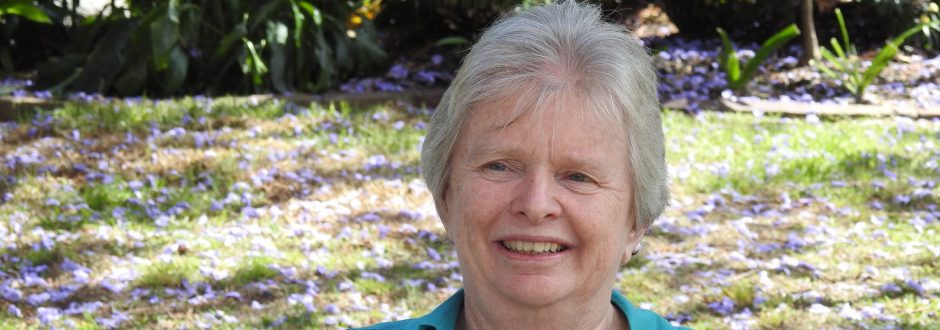If Sunday is no longer the day of rest and religious observance, why not explore new ways for living the Christian call to full and active participation in the Church’s liturgical life, asks Good Samaritan Sister Clare Condon.
BY Clare Condon SGS
“Just another manic Sunday” was the headline of an article in a recent weekend edition of the Sydney Morning Herald. In that article, Anna Patty commented on the Australian Productivity Commission’s (APC) proposed workplace reforms, and in particular, the recommendation to reduce penalty rates for workers on a Sunday to bring them into line with Saturday penalty rates.
The APC’s rationale for its recommendation is that Sunday, for many people, is now just like a Saturday. As Anna Patty wrote: “The notion of difference between Sunday and Saturday has changed over time. Saturday was once a normal workday for many and Sunday a day of rest and religious reflection. For many, Sunday is now a shopping day”.
Similarly, Jessica Irvine, also writing in the Fairfax press, said: “No longer do we gather in churches to worship. Bunnings and Coles are our new places of Sunday congregation. While Saturday remains our biggest shopping day, retail trading on a Sunday now outstrips some weekdays”.
Various statistics confirm that Sunday is no longer a day of rest or of religious reflection. This is particularly so for the Catholic Church in Australia. The last census of church attendance in 2011 continued to show a declining number of church attendees on a typical Sunday. Across Australia only about 12 per cent of Catholics attend Sunday Eucharist on a regular weekly basis. This is a drop of 1.6 per cent since 2006. Further, the percentage of those under 50 years of age is well below 10 per cent. (For more details see Mass Attendance in Australia: A Critical Moment, a report from the ACBC Pastoral Office.)
On these figures, there is a crisis for the Church, which regards Sunday Eucharist as an essential part of religious observance and of being Catholic.
There are many reasons posed for this decline in religious practice: some argue that it is the Church’s hardline teaching on sexual morality; others stopped practice because of sexual abuse by clergy and religious; others are simply caught up in consumerist shopping sprees and weekend sporting activities; while some simply don’t believe anymore. Probably all of these have some considerable part to play.
However, as a committed Catholic and a member of a religious order of sisters, I think there is another reason for declining church attendance on a Sunday – namely, the quality of the liturgical celebration of Eucharist held in many parish churches and cathedrals on any given Sunday. It’s an issue which the hierarchy of the Church fails to consider adequately, which should be added to the above list of reasons, and which should be seriously examined within the Church.
In my role I have the opportunity to participate in liturgy across many communities in Australia – and I have experienced some vibrant Eucharistic celebrations – but I must admit they are the exception rather than the rule.
The Second Vatican Council some 50 years ago wrote about the Eucharist in this way:
“In the restoration and promotion of the sacred liturgy, this full and active participation by all the people is the aim to be considered before all else; for it is the primary and indispensable source from which the faithful are to derive the true Christian spirit; and therefore pastors of souls must zealously strive to achieve it, by means of the necessary instruction, in all their pastoral work”. (Constitution of the Sacred Liturgy, December 4, 1963, No.14)
Full and active participation by all the people seems to be a goal abandoned and long gone from the early encouraging post-Vatican II days. Many Sunday liturgies today lack a vibrant and engaging participation by all those present. Some have even reverted to a pre-Vatican II emphasis on the separation of the priest and the people. Often it feels like I am an observer at Father’s Mass. He is somewhere up there hidden from the congregation by a growing number of tall candles across the front of the altar.
It seems to me we need a revival in understanding and in action to emphasise what full participation might look like in reality. All parts of the ceremony need to be recognised as moments of Christ’s presence. Christ is present in the gathered community, in the Word of God read and reflected on in the homily, in the Eucharistic prayer, in the reception of communion together with the gathered community.
Perhaps the Church, in recognising the demands made by a consumerist and secular society on its people, could be creative and offer alternative times and ways of engaging its young faithful in dynamic and active participation. If Sunday is no longer the day of rest and religious observance, does the Church lie down as defeated and revert to pre-Vatican II practices? On the contrary, is it not an opportunity to explore new ways to engage everyone in full and active participation in the liturgy which the Church regards as the summit of the Christian life?
Let creative minds and hearts find new ways for living the Christian call to full and active participation in the Church’s liturgical life.
